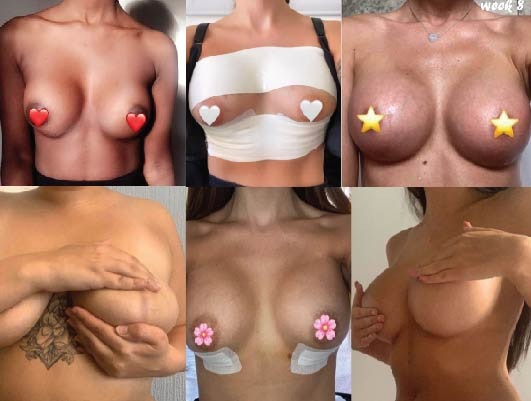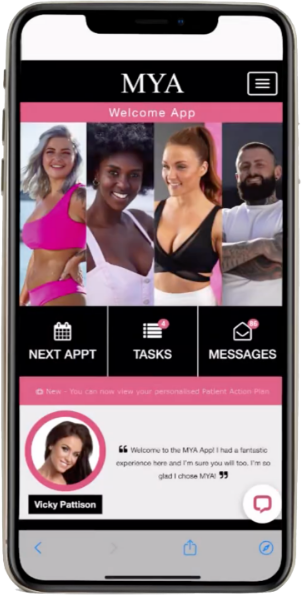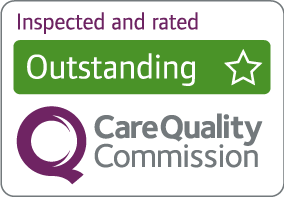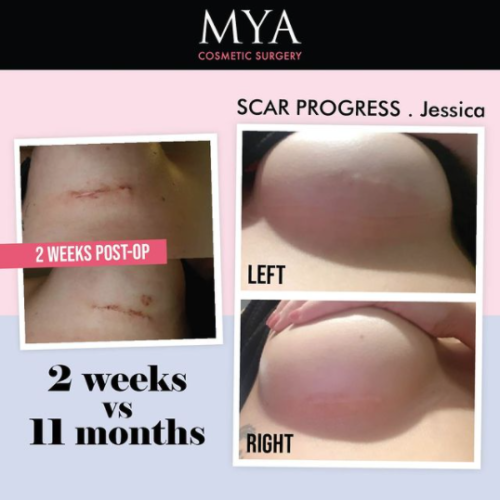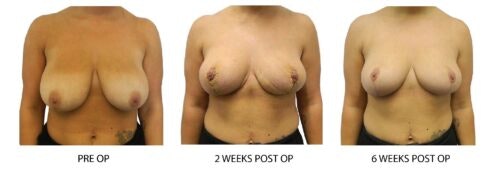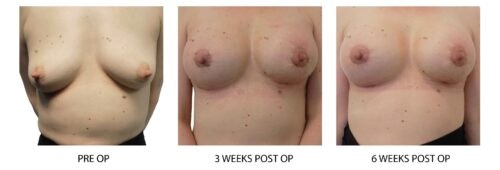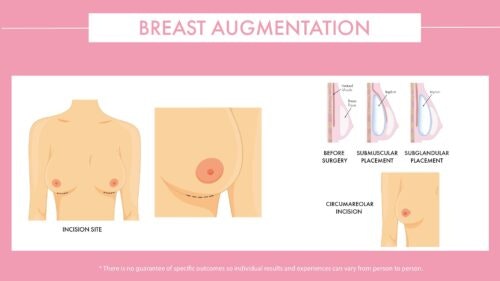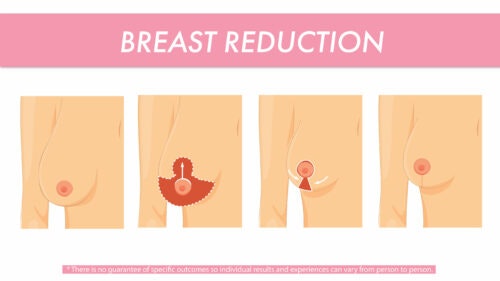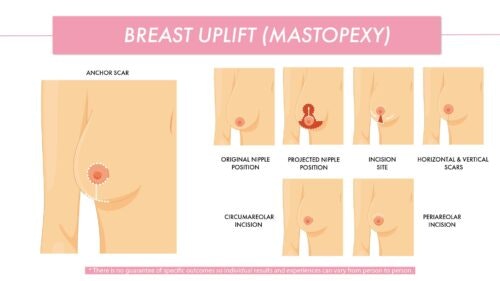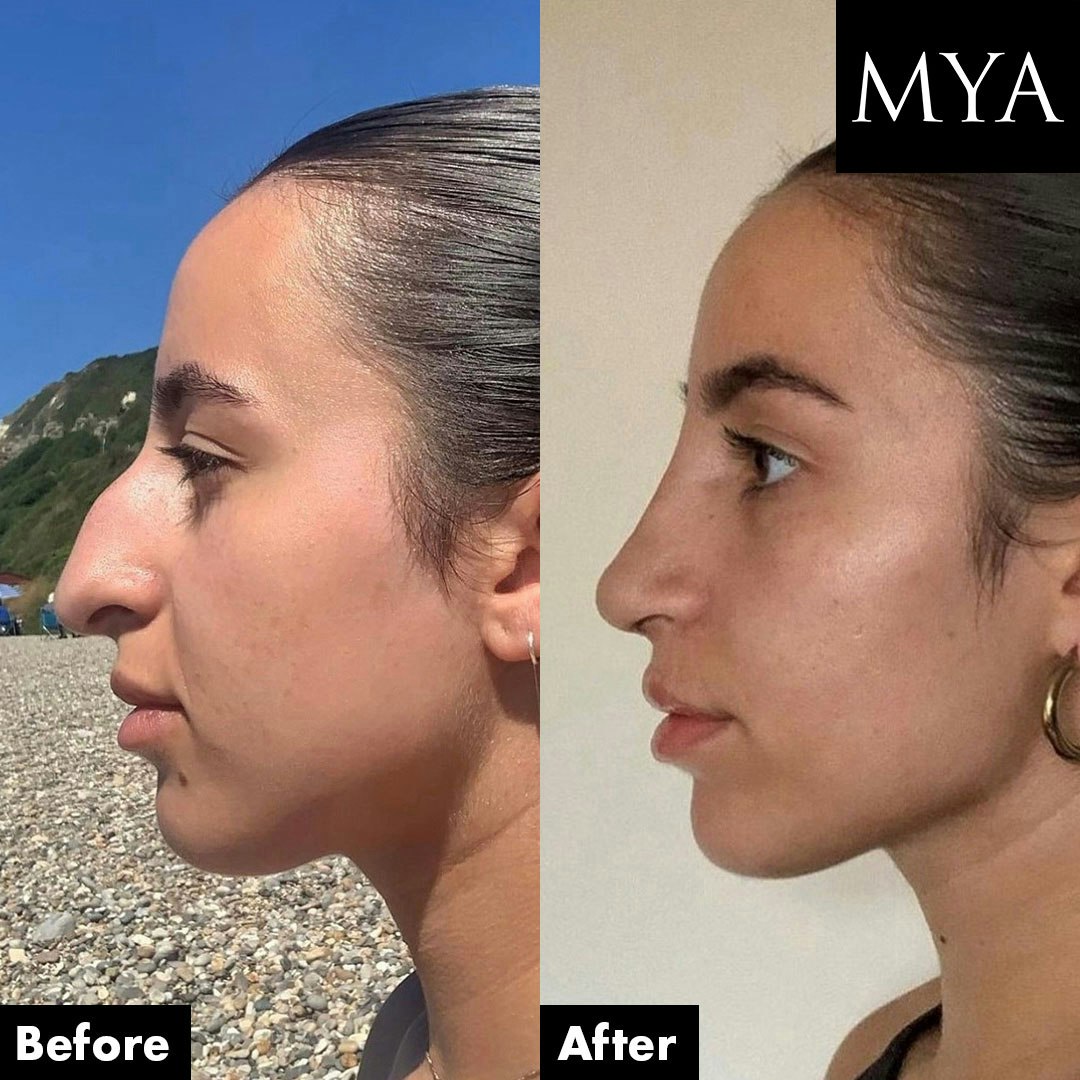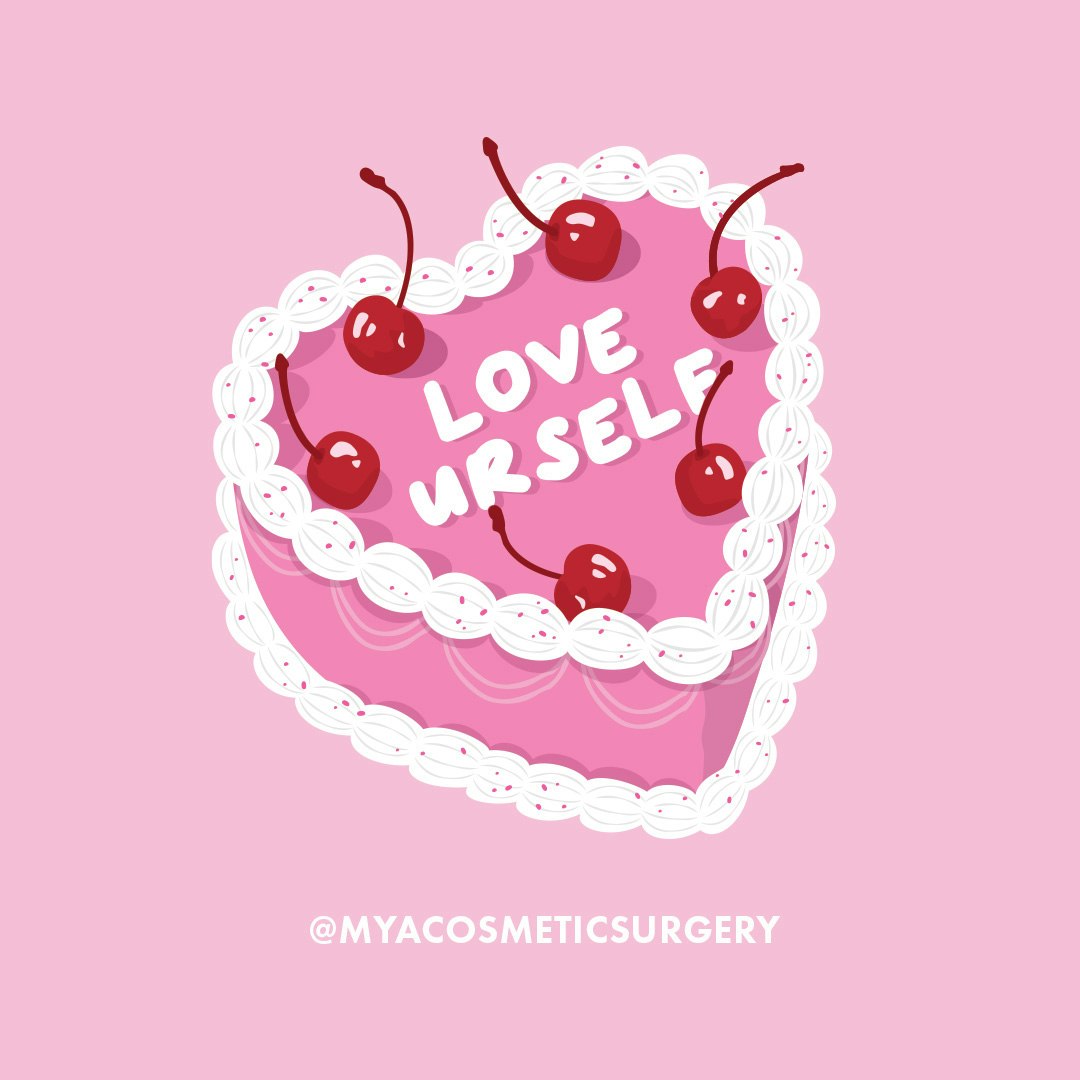Cosmetic surgery should not be taken lightly, understanding why and how scars heal and fade is an important aspect of your cosmetic surgery research, it will help prepare and set your expectations of surgery. MYA have created a breast surgery scarring guide to help you with your research:
Does breast surgery leave a scar?
Yes, the nature of the scarring will depend on the technique that is used by the surgeon. Surgeons use different incision techniques for different procedures and patient requirements.
Scarring can be red, raised and tender in the first week following surgery but most will fade and become paler over time during your recovery. Patients will attend a post-operative appointment with their MYA nurse to change any dressings and ensure scars are healing well. The scars will continue to heal up to 6 weeks post-op and fading can take up to a year. Scarring will never completely disappear but will likely be unnoticeable. The rate and extent to which the scars heal and fade are variable and differ from person to person, external factors such as diet, smoking, drinking alcohol, and UVA exposure can also affect the speed of recovery and final outcome.
Where is the breast enlargement scarring?
When having breast enlargement surgery, the surgeon will make a small incision (typically between 2-3 inches) in the crease of the breast. They will then insert the implants either in front of, between or underneath the muscle. The implant placement will depend on what has been discussed with the surgeon and the patient's requirements. The incision will be closed with either dissolvable or non-dissolvable sutures. Breast enlargement (breast augmentation) scarring is the least invasive and patient's should form good quality scars over time.
Please see the below pictures to see how the scarring heals over a 10 week period:
What is an anchor scar?
An anchor scar is the most common type of scar used in breast uplift (mastopexy) and breast reduction (mammoplasty) surgery, as it provides the best correction of ptosis (sagging of the breasts).
When a surgeon uses the anchor scar technique they make a circular incision around the areola (the dark circle around your nipple) and make a vertical incision from the nipple down to the breast crease and then along the breast crease (typically between 2-3 inches) forming the shape of an anchor. The anchor scar technique allows the re-sculpting and lifting of breast tissue and the removal of any excess and stretched out skin from the bottom and side of your breasts.
Please see the below pictures to see how the scarring heals over a 6 week period:
What is a lollipop scar?
A lollipop scar is technique that surgeons might use for medium sized breasts with a small amount of ptosis (sagging). This technique is likely to be used if the patient is having a breast uplift (mastopexy) or nipple lift and doesn't require the removal of excess skin. The surgeon makes a circular incision around the areola (the dark circle around your nipple) and makes a vertical incision from the nipple down to the breast crease. This technique allows the breast to be lifted and minimises the amount of scarring on the breasts.
Please see the below pictures to see how the scarring heals over a 6 week period:
What is a donut scar?
Surgeons typically use the donut scar technique when a patient requires a nipple lift or nipple reduction, often referred to as a modified mastopexy. The surgeon makes a circular incision around the areola (the dark circle around your nipple) and the incision will be closed with either dissolvable or non-dissolvable sutures. Some patients may only require a crescent scar, where the surgeon makes an a crescent-shaped incision around the top of the areola.
What is keloid scarring?
Keloid scarring is an enlarged, raised scar that can be pink, skin-coloured or darker than the surrounding skin. Patients with dark skin have a tendency to form thicker scars and are more likely to develop keloid scarring. If you have previously had any problems with scarring on your body such as red or raised scars, it is important to inform your surgeon of this at the time of your consultation. Some surgeons will treat keloid scars with cortisone steroids injections to help reduce the size and appearance of the scars.
Please see the below pictures to see how keloid scarring heals over 1 year:
Breast Augmentation scarring
If a patient is having breast augmentation surgery, their surgeon is likely to create a small incision along the breast crease to insert the implant. The surgeon will then insert the implants either over the muscle, under the muscle or partially in between the muscle and the connective tissue. The implant placement will depend on what has been discussed with the surgeon and the patient's requirements. Breast augmentation scarring continues to fade over time and many patients find that the incision scar is hidden in the breast crease and is not visible unless they are laid down.
Breast Reduction scarring
The most common scar to expect if you are having breast reduction surgery is the anchor scar as it allows for the removal of excess breast tissue and re-sculpting of the breast. At 1 week post-op there may be evident bruising and new wounds, therefore the initial results are not always as you imagine. Scars tend to be quite red in the first few weeks, changing to purple over the next three months and then fade and become paler in time. If you are worried about the appearance of the anchor scar, talk to your surgeon.
Breast Uplift scarring
There are a few variations of breast uplifts available to our patients: an uplift without implants (mastopexy) a nipple lift or nipple reduction (modified mastopexy) or an uplift with implants (augmented mastopexy).
Depending on the patients natural breast quality and existing breast tissue their surgeon may opt to use the lollipop scar or the donut scar to minimise scarring to the breasts. However, the most common scar to expect is the anchor scar, typically used for patients with ptosis and excess breast tissue. The rate and extent to which the scars heal and fade are variable and differ from person to person.
Implant Removal and Reaugmentation
When a patient is having breast implant removal and reaugmentation surgery (a second breast augmentation) the surgeon will make the incisions along the breast crease where the previous scarring sits. The new incisions will be closed with either dissolvable or non-dissolvable sutures and take up to 6 weeks to heal and fade. This technique is to minimise any further scarring to the breasts.
How to look after your scars
Wound care: It is extremely important that patient's wounds are checked at 7 days post-op by a MYA nurse and again at 14 days. This is to check the sutures and remove any if required and ensure wound is healing as expected. There may be some fluid leakage initially following surgery, so do not be alarmed as this is normal. However anything pronounced should be brought to the attention of your MYA nurse. Eating a healthy, protein rich diet helps to keep you feeling fit and healthy after surgery and aids wound healing.
Keeping your wound dry: It is very important that patients do not get their incision site wet for up to 7 days post-op. Patients are advised to keep clean and wash around the incision area using wipes or a sponge, until their MYA nurse tells them they can return to normal showering. If the incision area does get wet, pat it dry with clean towel. We do not recommend patients soak their wounds in a bath or swimming pool until their wounds are fully healed.
Products: It is strongly advised that patients do not use perfumed skincare products, make-up or oils on their incisions until fully healed. Patients are advised to protect their incisions from sunlight and sunbeds following surgery using 35+ SPF or by covering wounds completely for 1 year post-op.
What can I put on my breast augmentation scars?
Before putting any treatments, gels or creams on their scars, patients are advised to consult with their MYA nurse. Scars must be fully healed, if they are raised or inflamed, do not put anything on them. We recommend massaging a thin layer of bio oil or E45 cream on scars once a day until the scar is smooth to touch and pale in colour.
How to prevent scarring issues before surgery
Drinking alcohol: Patients are advised not to drink alcohol for a minimum of 48 hours before surgery. If patients drink more than 2-3 drinks daily, they need to abstain from alcohol for two weeks prior to surgery to reduce the risk of complications.
Stop smoking: Patients are advised that they must not smoke for 2 weeks (minimum) prior to surgery, this includes vapes and patched. Nicotine tests will taken on the day of surgery. Patients must continue to stop smoking post-op until they are fully healed as this can cause delayed healing, leading to an increased risk of infection.
*There is no guarantee of specific outcomes so individual results and experiences can vary from person to person.
